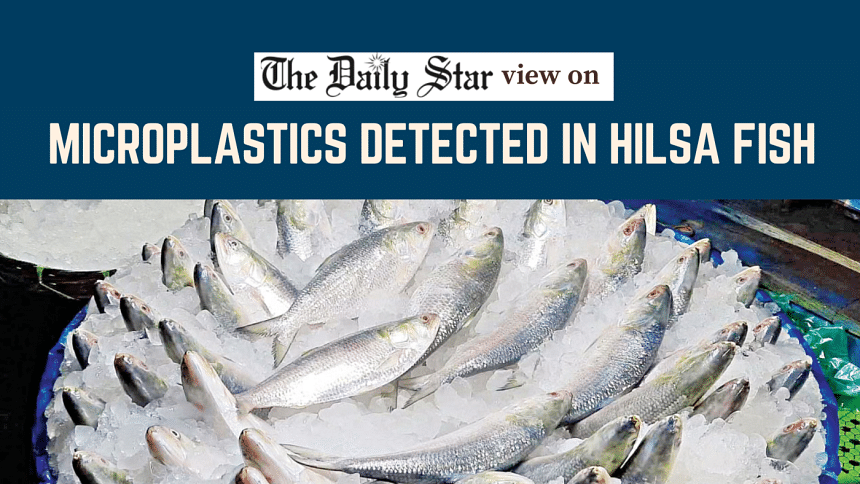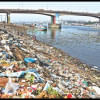Microplastic contamination of hilsa was inevitable

We are alarmed by the level of microplastic contamination in our aquatic ecosystems. A recent study has found microplastic particles—smaller than 5 millimetres—in the intestines, liver, and even muscle tissue of hilsa fish. Heavy metals such as cadmium, lead, mercury, and arsenic have also been detected in the fish's body. These particles, originating from plastic bags, bottles, synthetic fabrics, tyres, and cosmetics, are ingested by fish as they make their way into rivers and oceans. This raises serious concerns about food safety in the country as hilsa is a widely consumed fish here.
Plastic pollution, especially microplastic contamination, has now become a global issue, and Bangladesh seems to be in a more vulnerable state in this regard. Reportedly, between 2005 and 2014, Bangladesh experienced a 169 percent surge in plastic production, which is significantly higher than the global average growth rate of 25 percent. The presence of microplastics is higher in our coastal areas, where fishing boats and cargo ships dispose of plastic waste. Household waste disposal also contributes to this. So, fish in this area tend to ingest a higher amount of microplastics. Several studies have estimated that 10 to 30 billion microplastic particles are discharged into the Bay of Bengal daily through the Ganges River and its tributaries. The impact of this contamination is clearly visible at the Meghna estuary, which is the most important habitat and breeding ground of hilsa fish.
Previous research also found the presence of microplastics and heavy metals in hilsa fish from the Meghna basin and the Bay of Bengal. Not only hilsa, other fish and aquatic creatures are also vulnerable to plastic pollution. A 2022 study revealed that 17 species of fish and three species of shellfish from three key rivers in the Sundarbans were contaminated with microplastics. The study estimated that an adult consuming 300g of microplastic-contaminated fish muscle per week would ingest 74,282 microplastic particles annually, while a child eating 50g weekly would absorb 12,380 particles a year. These findings underscore the severity of plastic pollution in our aquatic ecosystems and the risks it poses to both marine life and human health. We need drastic action to reverse the trend.
Unfortunately, despite the ban on single-use plastic, the authorities are failing to prevent its use or discharge into rivers, and they are also failing to enforce the ban on polythene bags. We therefore urge the government to take strict action to ensure enforcement, raise public awareness, and make alternatives to plastic products widely available for a greater effect.


 For all latest news, follow The Daily Star's Google News channel.
For all latest news, follow The Daily Star's Google News channel. 










Comments